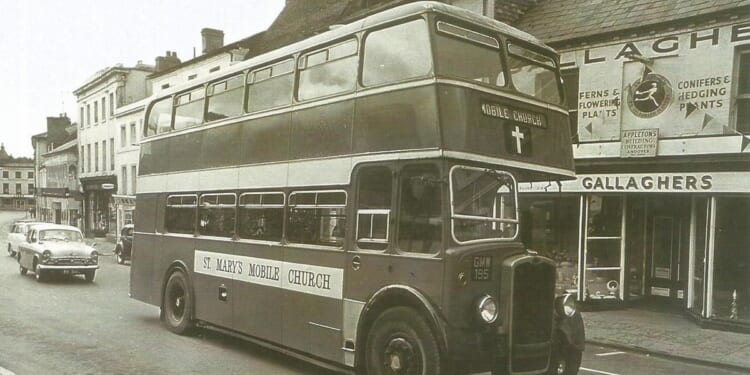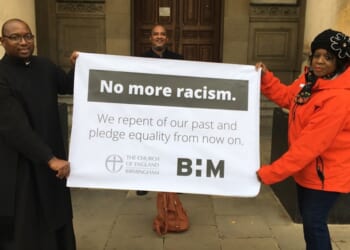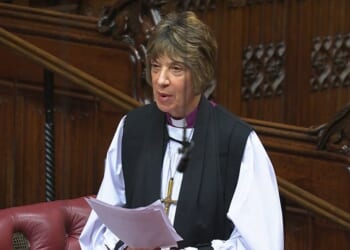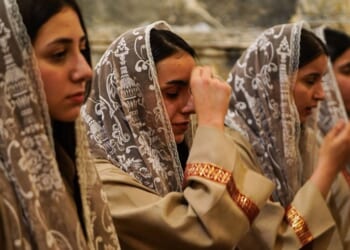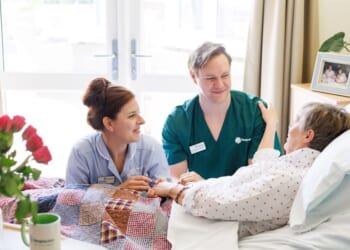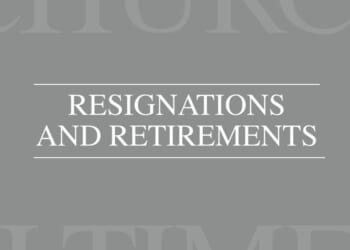IN THE 1960s, Andover, in Hampshire, was one of the towns earmarked for expansion as part of London overspill: a policy, initiated in the 1930s, under which more than one million Londoners were relocated to smaller towns — both existing ones and new ones — to alleviate overcrowding in the capital. For three years of that decade, a double-decker bus was a key part of church life for the residents of a housing estate in the town, thanks to the Revd Bryan Apps.
Newly ordained as a curate, Mr Apps started his ministry on one of the estates that were built to house the new intake of residents from London. There were plenty of people eager to go to church, although the local council had not factored that in when the new estates were being built.
“I had a meeting with the Vicar [the Revd Dr Ivor Machin, Vicar of St Mary’s, Andover], and he asked if it would be possible for me to start a Sunday school on one of the estates,” Mr Apps recalls. “I told him that there was nowhere on the estates for a meeting at all. The council wouldn’t even agree to a temporary hut.”
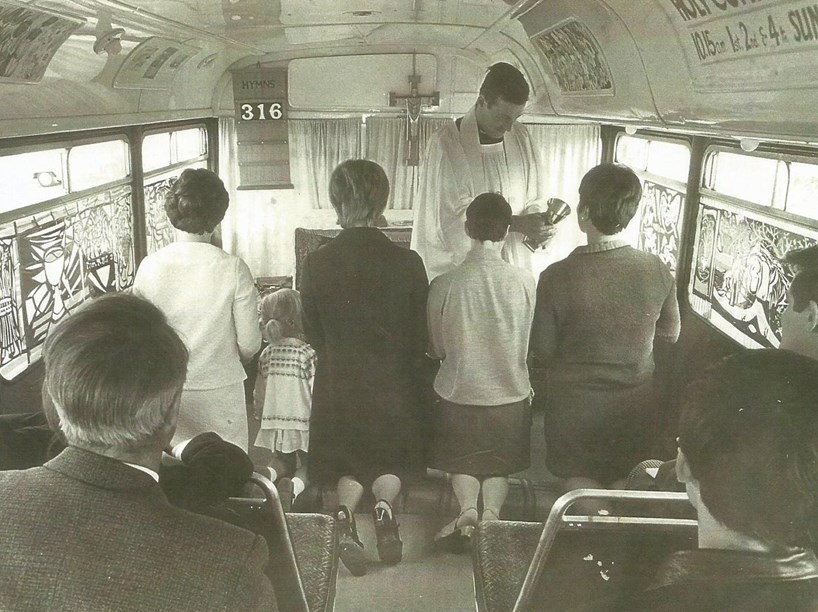
After pondering the problem together, he says, “out of the blue, I had this thought that could only have come from God. I said, ‘We could buy a double-decker bus and convert it into a church and Sunday school. We could drive it to the bus stop on the new estate, and pick people up in it.’”
The response was immediate. “Without even saying a word to me, the Vicar picked up his phone, called the Salisbury headquarters of the Wilts and Dorset Bus Company, and asked if they had any second-hand buses for sale. They said that they had four, which they would sell for £150 each. The next day, we approached a local businessman in Andover, who gave us a £300 interest-free loan to purchase one of the buses.”
Having procured a bus, the huge task of converting it into a church began. It was given an altar, a cross, and candles, and was fitted with a carpet. Once complete, it was dedicated by the then Bishop of Winchester, the Rt Revd Falkner Allison, on a glorious Sunday in 1966.
MORE than 100 children turned up for the first Sunday school session on board the bus. “I thought, this is really a getting off to a flying start,” Mr Apps recalls. In that first week, the mobile church was featured on the front pages of The Times, the Telegraph, and the Guardian.
This sparked media interest from further afield, and the bus went on to appear in the New York Times, the Japan Times, and the Australian Sunday Telegraph, as well as on a newsreel for Pathé News. “Mr Apps must be congratulated for his ingenuity, which has taken religion to his people and their children,” Pathé News said, approvingly.
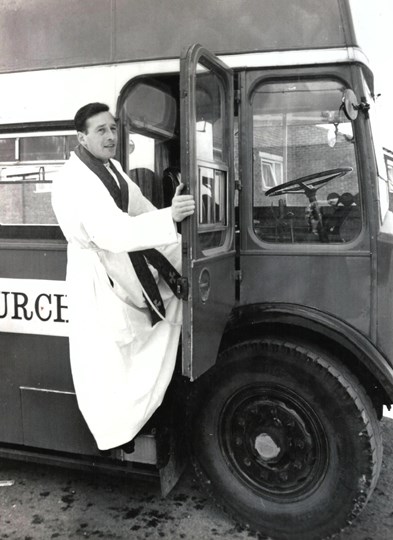
Keeping the bus both roadworthy and suitable for use as a meeting place brought with it myriad problems. But with each obstacle came a testimony of provision that Mr Apps believes could only be God at work. When all four of the bus’s batteries needed to be replaced, the Exide car-battery company provided the church with new ones, free of charge.
The next issue, Mr Apps recalls, was that Barbara Castle, then Minister of Transport, introduced a new measure. “Every road vehicle had to have its tyres checked, and any that didn’t have a minimum depth of rubber in their treads had to come off the road until they had new tyres. The tread on our bus’s tyres wasn’t just low: it was non-existent.
“I tried different tyre manufacturers, and they were all very helpful, but we needed six tyres altogether, and they could only give us a couple at a reduced price. In the end, the Firestone tyre company gave us the remaining four tyres we needed for free.”
Keeping the bus looking pristine also proved challenging, as its paintwork kept peeling off. Out of the blue, a paint manufacturer called to ask if they could use the bus in some advertisements. Mr Apps agreed, in exchange for some high-quality, longer-lasting paint. To complete the look, a group of artistic local schoolchildren were invited to decorate the bus’s windows.
“There were so many points at which the project could have failed,” Mr Apps says.
FOR three years, Mr Apps celebrated the eucharist on board the bus every Sunday, followed by Sunday school-classes for children. Then, Dr Machin moved to another parish. Sensing that the Vicar’s successor might not be as enthusiastic about the bus, Mr Apps decided to move on himself. A new secondary school had opened near the estate, and so there was now a potential venue for services and Sunday school. He set about selling the bus and taking up a new appointment in a parish in Southampton.
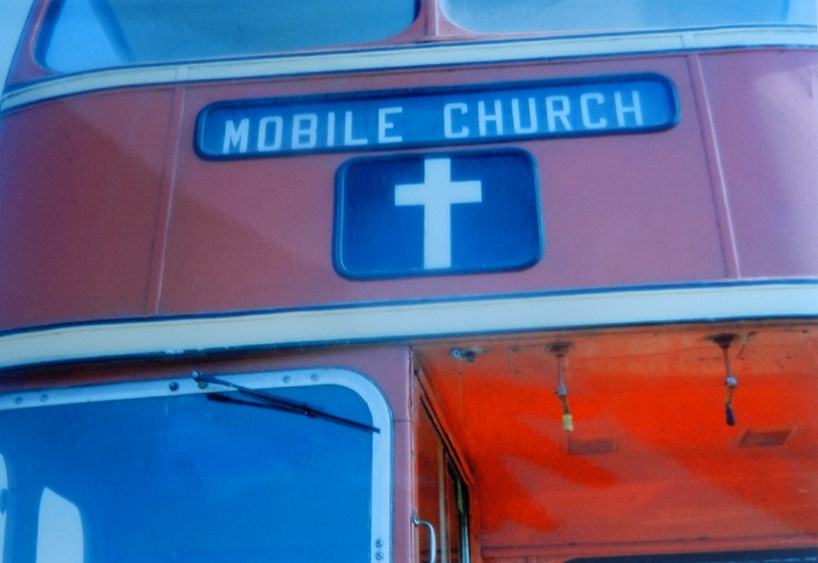
“When we left, the people had a reception to thank Bryan for all he’d done,” Mr Apps’s wife, Kath, says. “We hadn’t expected to be involved with a project like that when we moved to Andover, but it filled a need. I think the people who were on the estate were so grateful to have the bus brought to them, because they had so far to walk, to get into Andover. The children loved going on the bus for Sunday school. They thought it was great.”
But that would not be the last that Mr Apps heard of the bus. “We left, we came to Southampton, and I was officiating a wedding one day, waiting for the bride and the groom to turn up, and the wedding photographer came over to me and he said, ‘I’ve just moved from Birmingham. Your mobile church is there with the Methodist church, and it’s in in the papers all the time.’”
More memories of the bus would resurface in 1996, when Ian Hislop featured it in a Channel 4 documentary series on the history of the Church of England, Canterbury Tales.
Now aged 88, Mr Apps is retired, and the couple now live in Bournemouth. But he still looks back with fondness to the adventure that his ministry became back in the 1960s, when he first suggested buying a double-decker bus to use as a mobile church. “I’ve been very privileged,” he says.
Today, St Mary’s, Andover, uses a double-decker, “Life Bus”, for youth activities. Although the original St Mary’s bus may be long gone, its spirit remains.

